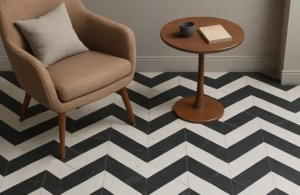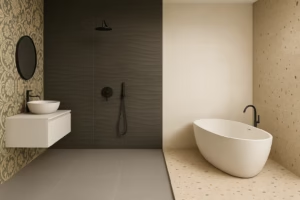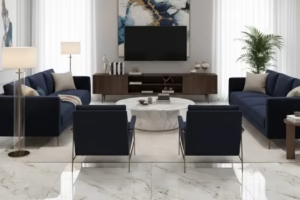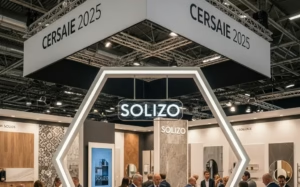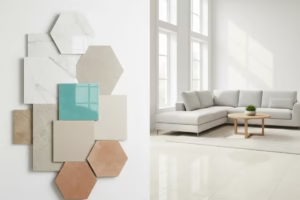
When it comes to designing or renovating a home, tiles play a major role in setting the tone of your interiors. From sleek modern kitchens to luxurious living rooms, the right tiles can elevate the look and feel of your space dramatically. Two of the most popular options in the tile world today are GVT (Glazed Vitrified Tiles) and PGVT (Polished Glazed Vitrified Tiles). Both are known for their durability, style, and wide range of applications—but they’re not the same.
If you’ve ever been confused by the terms GVT and PGVT while shopping for tiles, you’re not alone. In this blog post, we’ll break down the key differences, benefits, and ideal use cases for each tile type. By the end, you’ll have a clear idea of which tile suits your style, needs, and budget the best.
GVT stands for Glazed Vitrified Tiles. These tiles are created by applying a layer of glaze over vitrified tiles, which allows for an impressive variety of colors, textures, and patterns. Whether you want a wooden look or a stone-like finish, GVT tiles can replicate it beautifully while being low-maintenance
Key Features of GVT Tiles:
Available in matte, glossy, and rustic finishes
Stain and scratch resistant
Great for high-traffic areas
These tiles are a fantastic choice for:
Kitchens
Hallways
Commercial lobbies
Outdoor spaces (matte finish)
PGVT stands for Polished Glazed Vitrified Tiles. These are essentially GVT tiles that go through an additional polishing process, giving them a smooth, mirror-like finish. If you’re going for a high-end, luxurious look, PGVT tiles are perfect.
Why Choose PGVT Tiles?
Super glossy and reflective surfaceIdeal for luxury interiors
Mimics marble and other premium materials
Choose PGVT if you want:
Luxury
High-gloss finishes
Eye-catching elegance
Consider These Factors:
Foot traffic: High traffic? Go GVT.
Water exposure: Avoid PGVT in wet zones.
Aesthetic goals: Want shine and glam? Choose PGVT.
Household needs: Kids or pets? GVT is more forgiving.
How to Choose Between GVT and PGVT Tiles?
Making the right choice comes down to:
Or use both! GVT in functional areas, PGVT in focal spaces for a well-balanced home design.
GVT Tiles Are Best For:
Kitchens
Bathrooms (matte finish)
Hallways
Outdoor spaces
Commercial areas
PGVT Tiles Are Ideal For:
Living rooms
Bedrooms
Feature walls
Drawing or dining areas
Tip: Use GVT where practicality matters, and PGVT where aesthetics shine!
Price Comparison & Budget Tips
On a budget? GVT tiles might be your best bet. They typically range from INR 30 to INR 80 per sq. ft., depending on the finish and brand. PGVT tiles, being more polished and luxurious, are slightly costlier—usually ranging between INR 50 to INR 120 per sq. ft.
Budget Tips:
Mix and match to balance beauty and budget
Use PGVT tiles selectively—like feature walls or living areas
Opt for GVT in high-use zones to save costs
GVT vs PGVT Tiles: Head-to-Head Comparison
Here’s a quick comparison to help you decide:
| Feature | GVT Tiles | PGVT Tiles |
| Surface Finish | Matte / Satin / Glossy | High Gloss / Polished |
| Design Variety | High | Medium to High |
| Slip Resistance | Better | Lower (can be slippery) |
| Applications | Functional Spaces | Luxury Interiors |
| Price | More Affordable | Slightly Expensive |
Where to Use GVT and PGVT Tiles?
Picking the right tile depends on the room and usage:
📍 Visit a tile showroom and check samples under lighting to visualize the effect in your own home.
Final Verdict
Choose GVT if you need:
Durability
Practicality
Budget-friendliness
Or use both! GVT in functional areas, PGVT in focal spaces for a well-balanced home design.
Conclusion
Choosing the right tiles doesn’t have to be overwhelming. Now that you know the differences between GVT and PGVT tiles, you’re in a strong position to make the best choice for your home.
Remember:
GVT = Practical, Durable, Budget-Friendly
PGVT = Stylish, Glossy, Luxurious
Take your time, explore designs, and match tiles to your lifestyle. Because your space deserves to be both beautiful and functional.
FAQs
Yes! Especially matte or textured finishes for better grip.
It’s possible, but be cautious—they can be slippery when wet.
GVT tiles, thanks to their toughness and versatility.
Not easily, but scratches can be more visible due to their polished surface.
PGVT tiles are typically more expensive due to the extra polishing.
Related Posts
Product Enquiry
This will close in 0 seconds
Dealership Enquiry
This will close in 0 seconds
Registration Form
This will close in 0 seconds
Registration Form
This will close in 0 seconds

